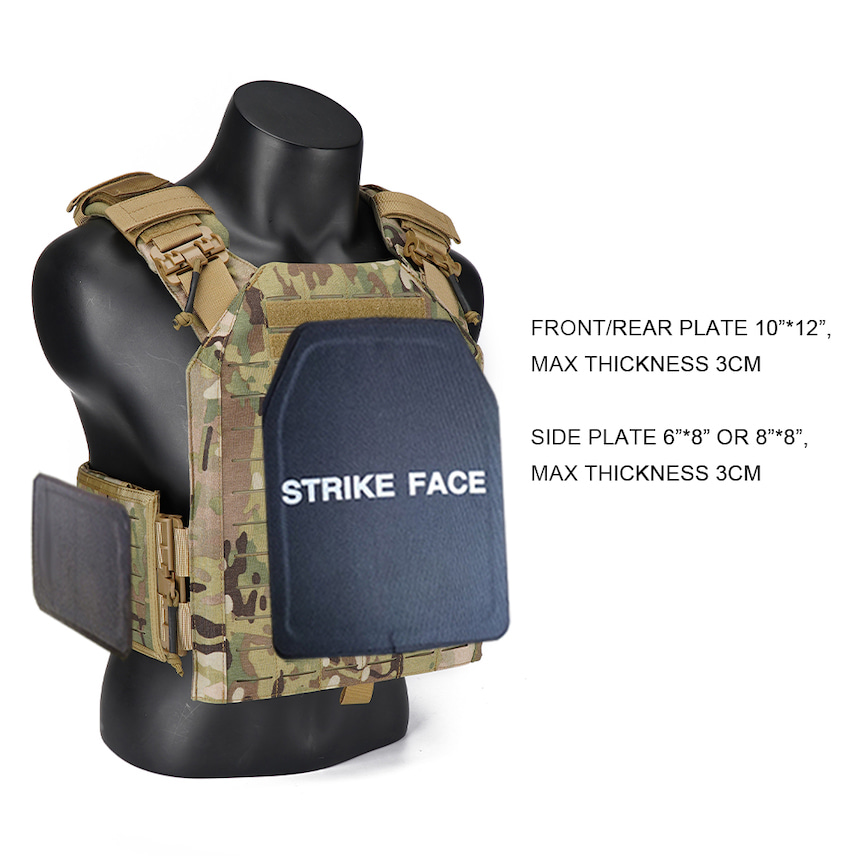
Keeping the Guards Safe – Prison Guard Protection
Working as a Prison Guard is a Constant Challenge!
It requires that you keep a calm and collected attitude while working in dangerous and often times completely random circumstances.
Even with proper training and equipment a prison guard can very easily be attacked and receive life threatening wounds.
On average, 11 work-related fatalities of guards are reported per year. Making the job of prison guard one of the top ten most dangerous jobs.
Look at more statistics here
Let’s Take a Look Inside the Average Day in the Life of a Prison Guard.
A Day in the Life of a Prison Guard
- Wake up around 4:45 AM and commute into work – (prisons are often long commutes away from the general public)
- Arrive 20 minutes early for the 6 AM shift
- Connect with the Ward Officer to brief the day
- Start the morning walk from cell to cell to check on the inmates status
- Inmates will often use this time as an opportunity to try and attack the guards by throwing objects or even bodily fluids
- Depending on the day guards may have to do cell searches and even body cavity searches to look out for contraband
- Let inmates out for breakfast, lunch, and yard time – while keeping a keen eye on all inmates for illicit behavior and substances
- Stroll the hallways and cells monitoring behavior in shifts
- Log your shift information into the computer system, making note of any prisoner infractions
- Lock prison down if prisoners are threatening to riot
- Monitor video surveillance of various areas of the prison
- Shift change with next crew of guards – 2 PM
- Let prisoners out for dinner – monitor all activity
- Lock down prison for the night
- Walk halls and cells all night to ensure compliance
- Shift change for the morning – 6 AM
Check out a video: here and here
As you can see, there are often hundreds, if not thousands of potentially dangerous prisoners that an officer is expected to be in very close contact with throughout their day.
Oftentimes officers are not armed with a gun for protection.
Because an officer doesn’t have a gun it is crucial that they feel safe and confident in their environment through other means, and the best way to do this is through using body armor.
Let’s Look At Some of the Most Popular Equipment Used to Keep Prison Guards Safe.
Best Prison Guard Equipment to Keep You Safe
- Handcuffs / Leg cuffs: made of the most resistant levels of steel and nickel composite for supreme strength and anti-rust capabilities. These cuffs made for hands, feet, and full combination are a mandatory tool for prison guards.
- Bulletproof / Stab Proof Vest: Level III-A technology can help to stop bullets and prison stabbing attempts. Having a protective vest of this caliber is often a psychological tool as much as a practical one.
- Gas Masks: Manufactured with 100% silicone and ABS these masks protect against tear gas, toxic smoke, and other TIM’s. These keep the guards unaffected from riot control techniques that are necessary to maintain a prison under control.
- Side Handle Baton: A classic non-lethal tool made popular by the police as far back as the 1800’s. The side handle baton is regarded greatly for its effective defensive qualities. The side-handle component prevents the baton from rolling far away if inadvertently dropped, helps to quickly block attacker’s blows, and has the ability to deliver a powerful hit when used with the power stroke technique. See video here.
- Electric Baton: A modern variation designed to administer an electric shock in order to incapacitate the target. It consists of an insulated handle and guard, and a rigid shaft usually a foot or more in length for delivering a shock. Many designs function like an elongated stun gun or a cattle prod, requiring the tip to be held against the target and then manually triggering a shock by a switch in the handle. Some more sophisticated designs carry a charge along the shaft’s entire surface, administering a shock on contact. This later design is especially useful in preventing the guard from having his weapon grabbed and taken away by an assailant. See video here.
- Extendible Baton: expandable batons may have a solid tip at the outer end of the innermost shaft; the purpose of the solid tip is to maximize the power of a strike when the baton is used as an impact weapon. Expandable batons are made in both straight and side-handle configurations, but are considerably more common in the straight configuration. The idea being that should violence suddenly escalate the baton can be easily deployed but can be stowed neatly away so as not to affect movement due to its mounting point on the guard’s clothing. See video here.
- Taser & Stun Gun: The Taser is an electroshock weapon developed in the 1970s. Using compressed nitrogen charges, it fires two hook-like electrodes that send an electrical current into a person, causing involuntary muscle spasms. The weapon can also be used without propelling electrodes, producing instead an electrical arc that can be thrust into a person. Tasers are designed to be used instead of firearms, greatly reducing deaths in the process; fewer injuries to police officers have been achieved with its use as well. See video here.
- Net Gun: Inspired by Spiderman comics and movies, this shotgun-like device fires a Kevlar net, which, traveling at about 65 mph, wraps up the suspect or criminal in a spider-like fashion, until guards can restrain him or her. See video here.
- Pepper Spray: causes temporary blindness and difficulty breathing, the effects of which lasting from 30 to 60 minutes. Some pepper spray formulas are combined with tear gas, to cause profuse tearing and disorientation. Some formulas have a dye included in the spray to mark the attacker for possible identification by law enforcement at a later time. See video here.
EDI-USA Manufactures the Prison Guard Equipment You Need!
We Ship To Your Door!
Look At Our Catalog of Guard Equipment Here: Catalog
Contact Us
For Help in Deciding For Your Team!
If you would like additional guidance to choose the best products for your team please contact us, we are confident that we can deliver all of your tactical customization needs.
EDI-USA















